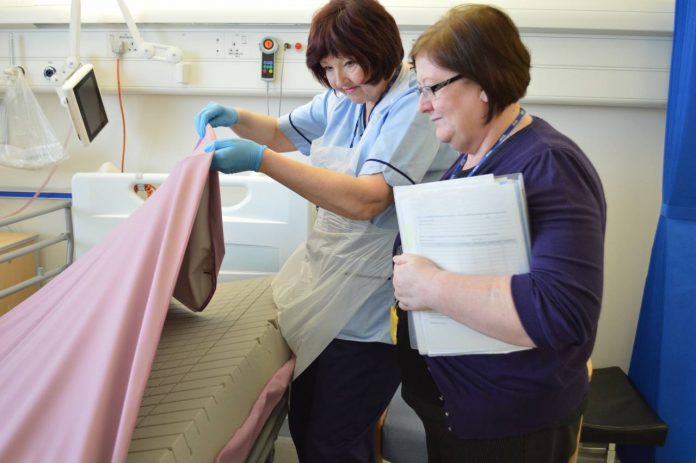The recent cases where patients in Lanarkshire and Lothian contracted Hepatitis C whilst in hospital have highlighted the importance of infection control. Although these incidents are extremely rare, it is a daily battle against more common infections such as norovirus and C-difficile.
Here in Forth Valley, thanks to the work of our infection control team, we have one of the lowest rates of norovirus and C-difficile infections in Scotland.
Some of this is due to a proactive approach to help prevent infections occurring but we have also made changes to the way we manage patients with infections which has made a real difference.
Lesley Shepherd, Lead Nurse Infection Control, explained: “In the past when patients in hospital became infected with norovirus it was normal practice to close the whole ward. A few years ago however, we decided to care for these patients in a separate bay with their own dedicated nursing team. This effectively quarantines the bay but enables the rest of the ward to operate as normal.
“Simple changes like giving staff protective masks to cover their mouths have also helped as, although these don’t protect you from the bugs which cause norovirus, they stop you from inadvertently touching your mouth – one of most common ways of transmitting the virus. Although we sometimes have to temporarily close mental health wards when we have cases of norovirus, because it’s not always possible to restrict patients to certain areas, the rates within our general acute wards are at an all time low.”
Our infection control team carry out regular ward audits and inspections and work closely with Estates staff to assess the layout and design of any new or refurbished areas. In addition, patient representatives carry out cleaning audits with staff at Forth Valley Royal Hospital.
NHS Forth Valley is also unique in monitoring infection rates for six common surgical procedures – rather than just the two which are mandatory. We also carry out surveillance for a wider range of bacteria, not just SABs.







